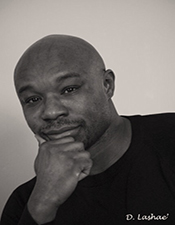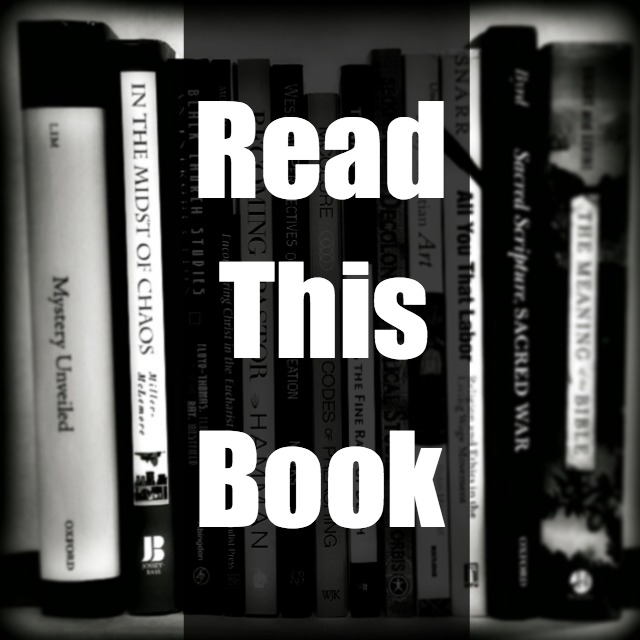READ THIS BOOK – December 2014
Each month, we ask a member of the Vanderbilt Divinity School faculty to recommend a book they are currently reading. Our December recommendation is offered by Herbert Marbury, Associate Professor of Hebrew Bible.
When I prep for a new course, I use the experience as an opportunity to read new books but also to reread those that I have long laid to rest. These exercises do more than refresh knowledge now gone dormant. Rather, I approach these texts afresh with new questions such as those being raised by our students or broader questions from the public square that beg a response from those of us who have devoted our lives to the study of religion. This semester I taught a course titled Eighth Century Prophecy, which focuses on the books of Hosea, Amos, Micah, and Isaiah1-39. The nomenclature “eighth century” comes from the era in which the prophecies themselves are set, although the writings are a product of a much later time.
 For the course, I returned to D.N. Premnath’s Eighth Century Prophets: A Social Analysis. I first read the book some years ago while studying the historical world of Hebrew prophecy. I recalled that Premnath’s argument was well researched and grounded in both the fruits of archeological research and social history. He pressed his thesis with persuasive clarity; however, for this reading, I was on more than an expedition for historical information. Rather, I came seeking an intersubjective encounter—a dialog between the eighth and twenty-first centuries—for my students and myself. I wanted the students to hear Amos’s “Let justice roll down like waters and righteousness like an ever-flowing stream” and Micah’s “God has told you what is good; and what does the Lord require of you but to do justice, and to love kindness, and to walk humbly with your God?” make a new claim upon our world. Premnath’s text proved an engaging partner. Less an exegetical study than an exploration in social history, Eighth Century Prophets drew the students into the multi-layered world that formed the context of the ancient Levant. Therein, they found thick descriptions of the social conditions that gave rise to prophetic calls for justice in the ancient world and warrants for justice in our own time
For the course, I returned to D.N. Premnath’s Eighth Century Prophets: A Social Analysis. I first read the book some years ago while studying the historical world of Hebrew prophecy. I recalled that Premnath’s argument was well researched and grounded in both the fruits of archeological research and social history. He pressed his thesis with persuasive clarity; however, for this reading, I was on more than an expedition for historical information. Rather, I came seeking an intersubjective encounter—a dialog between the eighth and twenty-first centuries—for my students and myself. I wanted the students to hear Amos’s “Let justice roll down like waters and righteousness like an ever-flowing stream” and Micah’s “God has told you what is good; and what does the Lord require of you but to do justice, and to love kindness, and to walk humbly with your God?” make a new claim upon our world. Premnath’s text proved an engaging partner. Less an exegetical study than an exploration in social history, Eighth Century Prophets drew the students into the multi-layered world that formed the context of the ancient Levant. Therein, they found thick descriptions of the social conditions that gave rise to prophetic calls for justice in the ancient world and warrants for justice in our own time
Briefly, Premnath focuses on economic, social, and political relations and particularly on the ways that the concentration of wealth and the creation of poverty fostered these relationships. First, he shows how the eighth century B.C.E was a period of unprecedented political power and economic growth. Ruling elite who dominated the state bureaucracy both benefited from this growth and extracted the surplus for their ends. The result was latifundialization, the accumulation of vast swaths of arable land by a few. He shows how in agrarian societies land tenure in the hands of the few worsened the plight of the majority. Second, he takes up the question of labor and the way that land tenure forced a majority to work themselves into slavery on land owned by others. Landowners tilted resources toward producing cash crops and luxury items such as wine, expensive oils, and even perfume, which left families in villages little to meet local subsistence needs. Third, Premnath shows how the rise of Assyrian imperialism and the forces of colonization strained each stratum of Israelite and Judahite societies.
Hebrew prophecy comes alive in such a world. Its concerns are made material and Premnath shows how they mattered for the everyday lives of those who lived under these conditions. More importantly, in that intersubjective space students found a word of justice for our world. Some of the students made easy connections between imperialism in the ancient world and the unchecked ravages of globalization in our own. Others saw ways that the literature both affirmed freedom while simultaneously supporting patriarchy. These students saw in the literature a critique of the very figures for whom the books are named. They saw the literature undermining patriarchy in ways that the writers themselves could never have imagined. In other places, Premnath’s methodology gave students new perspectives. Premnath pointed to a prophetic critique of the connection between agricultural production and labor relations while students identified interlocking systems and modes of oppression in our own world. They identified relationships between heterosexism and healthcare access, in the ways that state brutality and patriarchy conspire to promote sex trafficking, and in the ways that diminished access to education exacerbates racialization, to name a few. In the intersections, each found a reason to be invested in the other’s concerns. Inevitably, in light of the glaring injustice in the killings of Michael Brown, Tamir Rice, Eric Garner, and Trayvon Martin, some students sought a more particular word to respond to evil in our midst. They found hope in prophecy’s word of judgment. For them, the Bible’s vivid descriptions of divine destruction hang over our world brought on by our refusal to heed the words of Micah’s simple admonition, “God has told you, O mortal, what is good.”
By the end the semester, I left the class affirmed in my practice rereading and our abilities to interpret a fresh word for our time from ancient societies and texts both ancient and modern. Most importantly, I left with new confidence in the fact that students from Vanderbilt Divinity School will shape our world toward the good.
